The endangered El Segundo blue butterfly
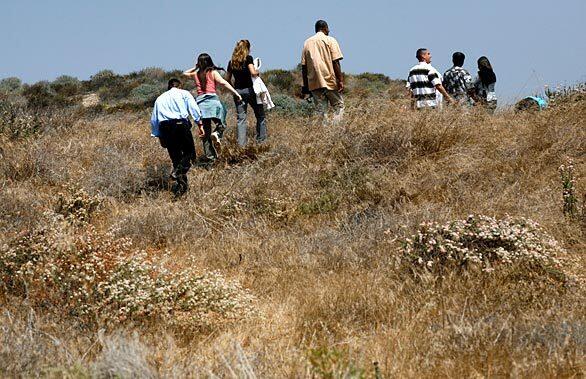
Visitors to the El Segundo blue butterfly habitat restoration area near LAX walk carefully down the pathways in search of the insect, which has a wingspan the size of a thumbnail. (Mark Boster / Los Angeles Times)
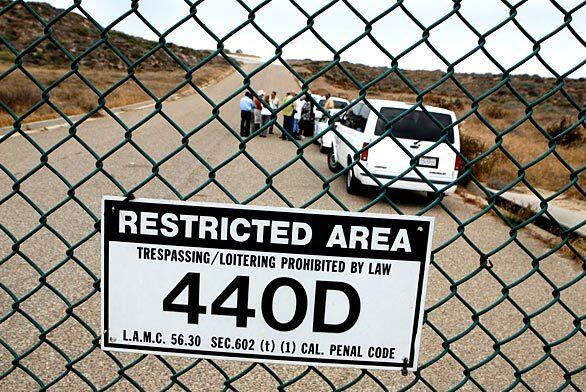
Security gates are designed to keep the public out of the El Segundo Dunes, southwest of Los Angeles International Airport’s north runway. (Mark Boster / Los Angeles Times)
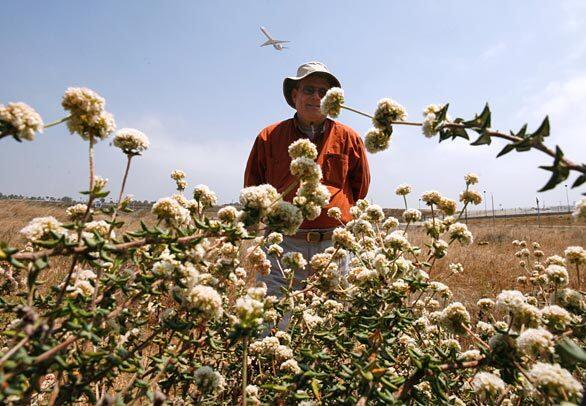
Entomologist Richard Arnold is in charge of studying and monitoring the butterfly in the habitat restoration area near LAX. The insect flutters around the fluffy flowers of the seacliff buckwheat. (Mark Boster / Los Angeles Times)
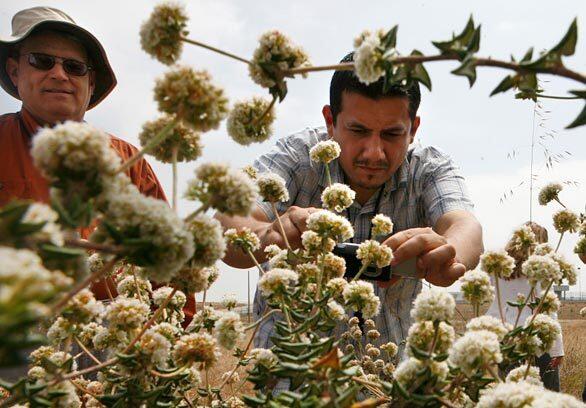
A visitor gets a closeup view of the tiny butterfly while Richard Arnold, left, watches. Arnold said the insect’s numbers at the El Segundo Dunes has grown to 35,000 to 100,000, depending on the year, up from a few thousand when the federal government placed it on the endangered list in 1976. (Mark Boster / Los Angeles Times)
Advertisement
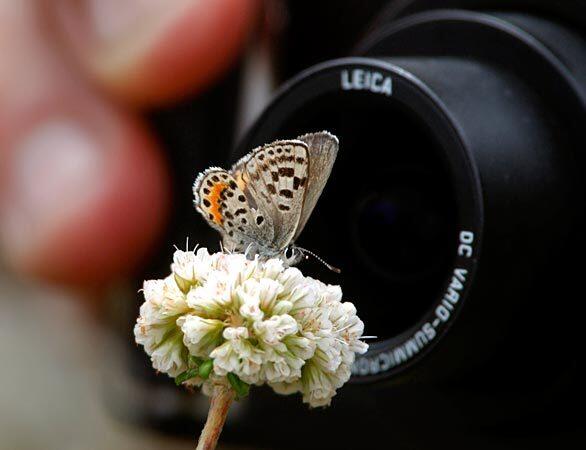
A female allows a photographer to get a closeup. The male has blue on top of its wings. (Mark Boster / Los Angeles Times)
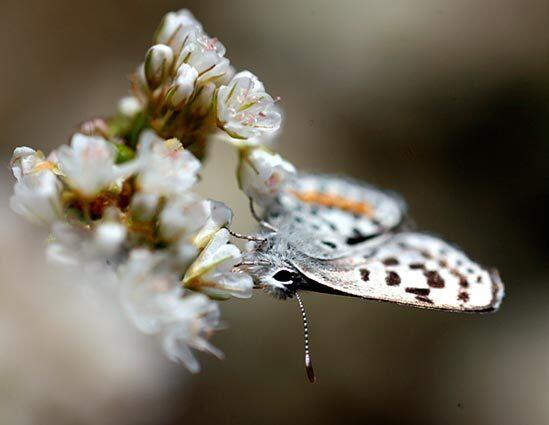
The butterflies stay close to the seacliff buckwheat, which is central to their life cycle. (Mark Boster / Los Angeles Times)
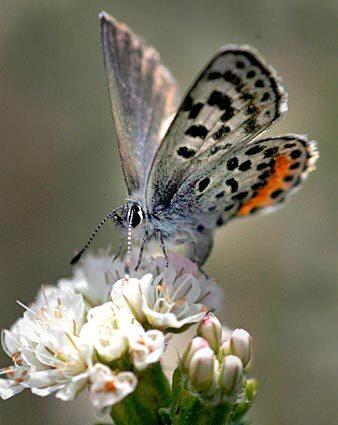
The adult El Segundo blue sucks the nectar from the seacliff buckwheat flower. The larvae feed on the seeds inside the plant’s flower head, a collection of tiny flowers that look like a puff of cotton. (Mark Boster / Los Angeles Times)
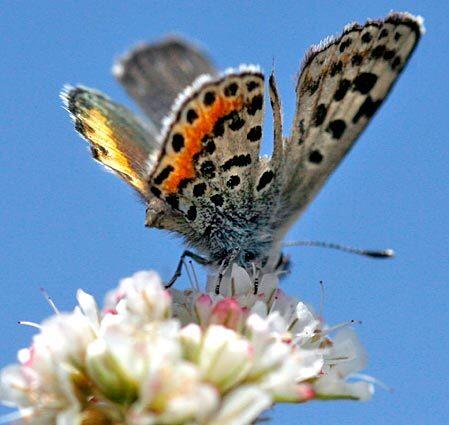
The butterfly was the third insect classified as an endangered species, just after two insects in Florida. There are now about 50 insects on the federal endangered species list, according to entomologist Richard Arnold. (Mark Boster / Los Angeles Times)
Advertisement
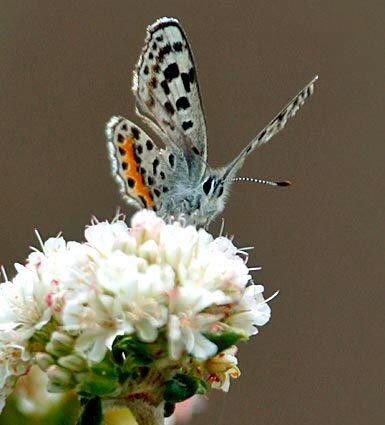
A female butterfly at El Segundo Dunes, which has by far the largest population. There are smaller colonies on two acres at Chevrons El Segundo refinery, on private land in Torrance and, in a migration that has surprised experts, at beaches in Torrance and Redondo Beach. (Mark Boster / Los Angeles Times)







